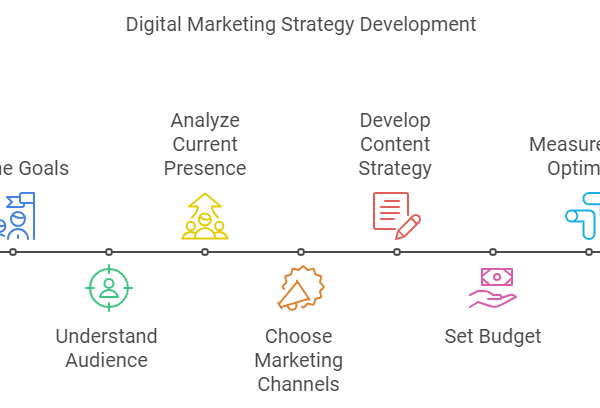
The Junior Associate of the Indian Institute of Bankers (JAIIB) examination is a crucial stepping stone for those aspiring to build a successful career in the banking sector. This certification is recognized and conducted by the Indian Institute of Banking and Finance (IIBF) and is a mandatory requirement for employees in the banking industry to enhance their knowledge and skills. To excel in the JAIIB syllabus, one must have a clear understanding of the syllabus and the various subjects it covers. In this article, we will provide a comprehensive overview of the JAIIB syllabus without plagiarism, ensuring that you are well-prepared to ace this examination.
Paper 1: Principles and Practices of Banking
The first paper of the JAIIB examination is “Principles and Practices of Banking.” This paper serves as the foundation for the subsequent papers and covers a wide range of topics, ensuring that candidates have a strong grasp of the fundamental principles of banking. The syllabus for this paper includes:
- **Indian Financial System**: Understanding the structure and functioning of India’s financial system, including banks, non-banking financial institutions, and regulatory bodies like RBI.
- **Functions of Banks**: An in-depth look at the various functions of banks, such as lending, deposit-taking, and payment systems.
- **Banking Technology**: Exploring the role of technology in modern banking, including digital banking, electronic fund transfer systems, and cyber security.
- **Regulatory Aspects of Banking**: Understanding the regulatory framework governing banks, including Basel norms, KYC guidelines, and anti-money laundering (AML) measures.
- **Accounting and Finance for Bankers**: Delving into the principles of accounting, financial statements, and credit appraisal techniques.
- **Legal and Regulatory Aspects of Banking**: Examining the legal aspects of banking, including laws related to negotiable instruments, banking ombudsman, and consumer protection.
Paper 2: Accounting and Finance for Bankers
The second paper, “Accounting and Finance for Bankers,” focuses on providing candidates with a deep understanding of financial concepts and banking operations. This paper includes the following topics:
- **Business Mathematics and Finance**: Covering essential mathematical concepts such as ratios, percentages, and interest calculations, along with financial management principles.
- **Financial Statements**: Analyzing financial statements, including balance sheets, income statements, and cash flow statements, to assess a bank’s financial health.
- **Analysis of Financial Statements**: Techniques for evaluating a bank’s performance and creditworthiness through financial statement analysis.
- **Fundamentals of Costing**: Understanding cost accounting principles and their application in banking operations.
- **Basic Economics**: Exploring economic concepts such as inflation, money supply, and monetary policy, with a focus on their relevance to banking.
Paper 3: Legal and Regulatory Aspects of Banking
The third and final paper, “Legal and Regulatory Aspects of Banking,” delves into the legal framework governing the banking industry in India. This paper includes the following key topics:
- **Regulations and Compliance**: Understanding the various regulations, guidelines, and compliance requirements that banks must adhere to, including those related to asset classification, provisioning, and income recognition.
- **Banking-related Laws**: An in-depth exploration of banking-related laws and acts, including the Banking Regulation Act, Negotiable Instruments Act, and SARFAESI Act.
- **Laws Relating to Bills of Exchange**: Detailed examination of the legal aspects surrounding bills of exchange and promissory notes.
- **Customer Relations**: Addressing legal issues related to customer rights, duties, and dispute resolution mechanisms.
- **Banker-Customer Relationship**: Analyzing the legal implications of the relationship between banks and their customers, including the rights and responsibilities of both parties.
Part I: Principles & Practices of Banking
The first part of the JAIIB syllabus is dedicated to “Principles & Practices of Banking.” This section is divided into five units, each covering essential aspects of banking operations:
- Indian Financial System
– Understanding the structure and functioning of the Indian financial system.
– Key players in the financial market, including banks, NBFCs, and regulators.
– Various financial instruments and their role in the economy.
- Functions of Banks
– Overview of different types of banking services.
– Role of banks in the economy, including credit creation, payment systems, and financial intermediation.
– Risk management in banking.
- Banking Technology
– The impact of technology on banking operations.
– Online banking, mobile banking, and digital payment systems.
– Cyber security and data protection.
- Support Services
– Ancillary services provided by banks, such as safe deposit lockers, ATM services, and remittances.
– Customer service and grievance redressed.
– Banking ombudsman scheme.
- Banking Regulations
– Overview of banking regulations and their importance.
– Reserve Bank of India (RBI) and its functions.
– Banking laws and regulations in India.
Part II: Accounting & Finance for Bankers
The second part of the JAIIB syllabus focuses on “Accounting & Finance for Bankers.” This section is crucial for understanding the financial aspects of banking:
- Business Mathematics and Finance
– Financial mathematics, including compound interest, annuities, and present value calculations.
– Time value of money.
– Calculating loan EMI and bond yields.
- Principles of Bookkeeping and Accountancy
– Basics of double-entry bookkeeping.
– Preparation of financial statements (profit and loss account, balance sheet).
– Depreciation and provisions.
- Final Accounts
– Understanding the final accounts of a banking institution.
– Balance sheet analysis.
– Income recognition and asset classification.
- Banking Operations
– Interbank dealings, money market, and capital market operations.
– Treasury management and risk management in banks.
– Asset-liability management.
Part III: Legal & Regulatory Aspects of Banking
The third part of the JAIIB syllabus delves into the “Legal & Regulatory Aspects of Banking.” This section covers various laws and regulations that govern the banking industry:
- Regulations and Compliance
– Banking regulations, codes, and guidelines.
– Know Your Customer (KYC) norms.
– Anti-money laundering (AML) and combating the financing of terrorism (CFT) measures.
- Legal Framework
– Banking-related laws, including the Banking Regulation Act and Negotiable Instruments Act.
– Rights and obligations of bankers and customers.
– Legal aspects of lending and recovery.
- Banking Related Laws
– The Securitization and Reconstruction of Financial Assets and Enforcement of Security Interest (SARFAESI) Act.
– Debt Recovery Tribunals (DRTs) and their role.
– Consumer protection in banking.
Conclusion
In conclusion, the JAIIB examination plays a pivotal role in the banking sector, and a comprehensive understanding of its syllabus is essential for success. By mastering the principles and practices of banking, accounting and finance, as well as legal and regulatory aspects, aspiring bankers can enhance their knowledge and skills to excel in their careers. This article has provided an in-depth overview of the JAIIB syllabus, ensuring that candidates are well-prepared to tackle this significant milestone in their banking careers. Remember, diligent preparation is the key to success in the JAIIB examination, and a strong foundation in these subjects will open doors to greater opportunities in the dynamic world of banking.











